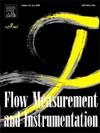Not-A-Knot cubic spline model to predict accurately the viscosity calibration curve of turbine flow meter with experiment validation
IF 2.3
3区 工程技术
Q2 ENGINEERING, MECHANICAL
引用次数: 0
Abstract
Calibration facilities of fluid flow rate measurement, particularly primary standards, require significant operational costs and time. The more measuring points, the more resources will be consumed. Additionally, turbine flow meters are frequently operated in the industry but have nonlinear traits due to viscosity effect, so the prediction and estimation of their calibration curves are challenging research objects. Moreover, the transition between laminar and turbulent flow causes the turbine meter response to be non-linear. Techniques often used in calibration laboratories, such as ordinary regression and polynomial interpolation, still produce unsatisfactory accuracy. In particular,the Not-A-Knot cubic spline model is proposed because it promises excellent continuity and smoothness. This research aims to be a pioneer in developing an accurate prediction model with experimental evidence of calibration curves for turbine flow meters employing the Not-A-Knot cubic spline model. Validation with experimental results showed that the proposed method has better accuracy than common model, particularly 6th-degree polynomial, although it had more complex function. In addition, the cubic spline model had more minor errors and measurement uncertainties in forecasting unknown values with limited sample data, which could achieve an accuracy improvement of 21% compared to the 6th-degree polynomial model. In most case studies, the proposed method, Not-A-Knot cubic spline model was superior to other compared methods, which could reach the natural trait of calibration curves for turbine flow meters that shifted from laminar to turbulent flow.

求助全文
约1分钟内获得全文
求助全文
来源期刊

Flow Measurement and Instrumentation
工程技术-工程:机械
CiteScore
4.30
自引率
13.60%
发文量
123
审稿时长
6 months
期刊介绍:
Flow Measurement and Instrumentation is dedicated to disseminating the latest research results on all aspects of flow measurement, in both closed conduits and open channels. The design of flow measurement systems involves a wide variety of multidisciplinary activities including modelling the flow sensor, the fluid flow and the sensor/fluid interactions through the use of computation techniques; the development of advanced transducer systems and their associated signal processing and the laboratory and field assessment of the overall system under ideal and disturbed conditions.
FMI is the essential forum for critical information exchange, and contributions are particularly encouraged in the following areas of interest:
Modelling: the application of mathematical and computational modelling to the interaction of fluid dynamics with flowmeters, including flowmeter behaviour, improved flowmeter design and installation problems. Application of CAD/CAE techniques to flowmeter modelling are eligible.
Design and development: the detailed design of the flowmeter head and/or signal processing aspects of novel flowmeters. Emphasis is given to papers identifying new sensor configurations, multisensor flow measurement systems, non-intrusive flow metering techniques and the application of microelectronic techniques in smart or intelligent systems.
Calibration techniques: including descriptions of new or existing calibration facilities and techniques, calibration data from different flowmeter types, and calibration intercomparison data from different laboratories.
Installation effect data: dealing with the effects of non-ideal flow conditions on flowmeters. Papers combining a theoretical understanding of flowmeter behaviour with experimental work are particularly welcome.
 求助内容:
求助内容: 应助结果提醒方式:
应助结果提醒方式:


